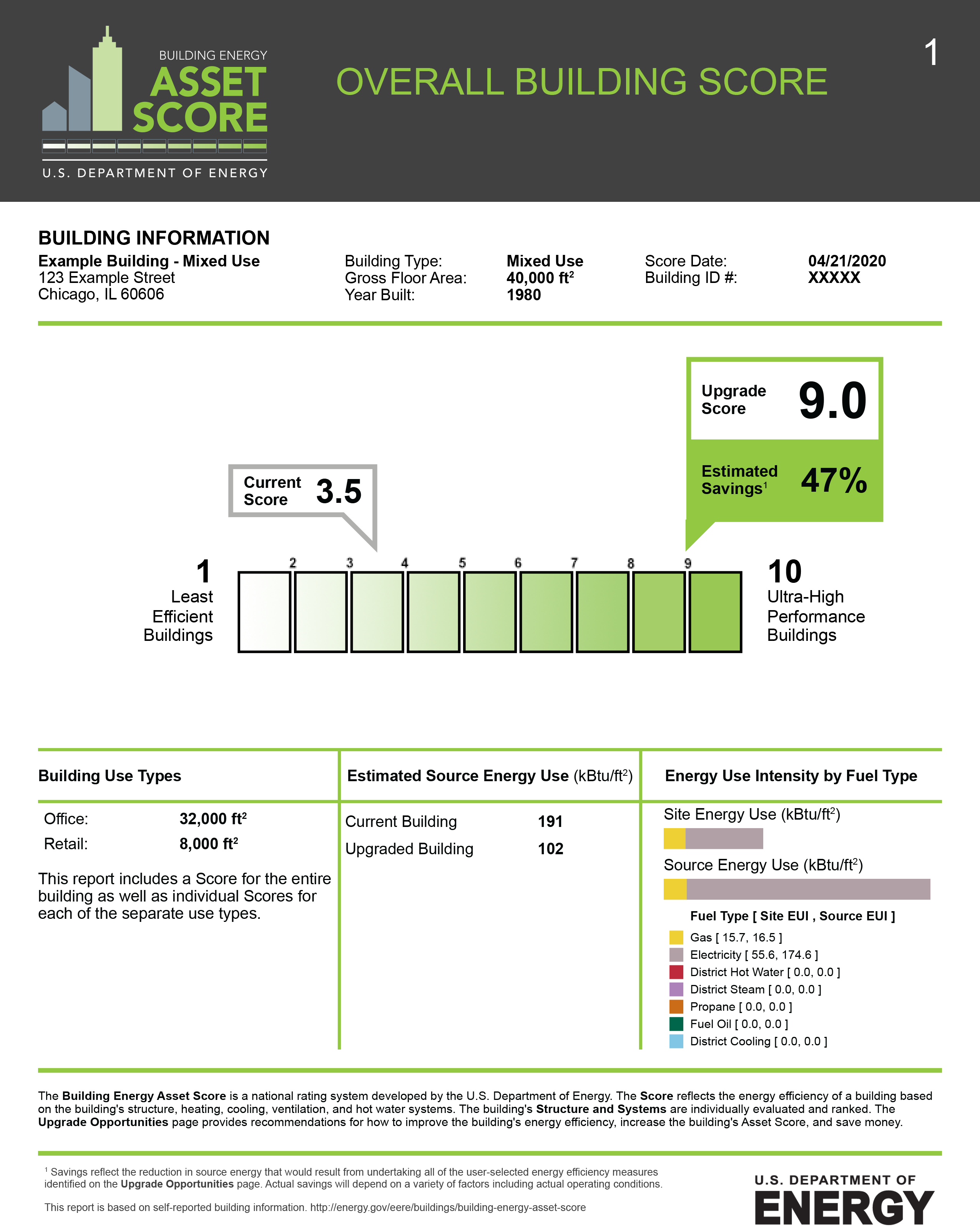
Building Energy Asset Score
Building Energy Asset Score
Rating efficiency
Rating efficiency
Buildings old and new can benefit from the Asset Score rating and recommended energy efficiency measures.
PNNL continues to enhance a national energy efficiency rating tool for commercial and multi-family residential buildings. The Building Energy Asset Score, known simply as “Asset Score,” provides information for buildings similar to what’s found in energy guides for appliances and on vehicle fuel-economy stickers.
Developed at PNNL, the Asset Score combines novel modeling and whole-building energy simulation capabilities to successfully evaluate a building and its systems. As of early 2020, the software tool has been applied to more than 9,300 buildings representing nearly 1.3 billion square feet of commercial space. Asset Score was designed to be readily accessible to building owners, operators, and occupants. It is easy to use, free, relevant for existing and new structures, and requires only basic building information to obtain a rating.

A score and more
For each building, Asset Score assigns a rating from 1 to 10, with 10 reflecting the best possible energy efficiency. The tool provides a tailored set of suggested efficiency improvement measures for the building. The measures are designed for cost-effective implementation. Users can also choose a high-performance building package to view the potential benefits from a deeper application of improvement measures.
The tool takes into account that buildings contain specialized design features, mechanical and electrical systems, and functionalities. The tool also considers building locations, including climate and environmental variations. These differences are factored into the rating.
One of the features in the Asset Score’s tool suite, the Audit Template, collects, standardizes, and reports a building’s energy audit data. The tool formats the data and verifies its quality so that it can be readily digested and utilized by users, such as municipalities and energy service providers, to foster efficiency objectives. Multiple cities in the U.S. have adopted energy audit ordinances and employ the Asset Score and Audit Template to support their missions.
PNNL, in partnership with the U.S. Department of Energy’s Building Technologies Office, continues to work with a wide range of stakeholders to enhance the technology’s power, reliability, usability, and transparency.

